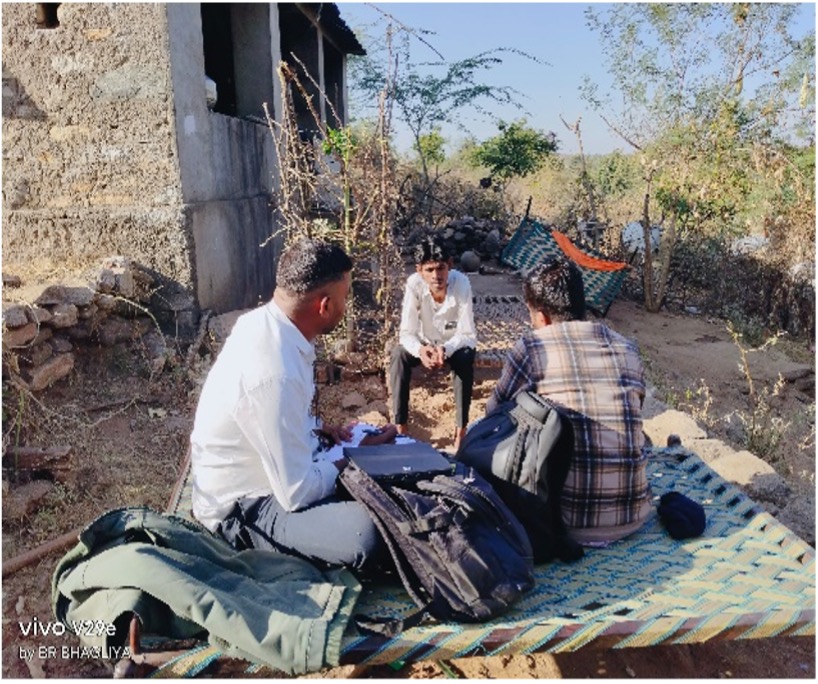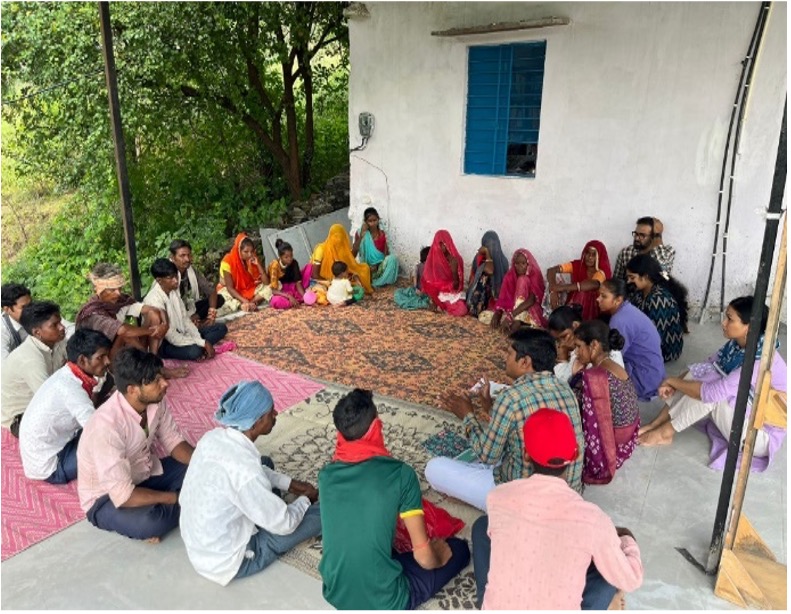A month ago a team of nurses, health workers and public health professionals in our team sat down to call Tuberculosis (TB) patients who had not been coming to the clinic for their medicines. For context, the 6 AMRIT Clinics run by Basic Healthcare Services see over 1000 new patients of TB every year. Over one in 3 of them drop out of treatment at different points of time, many of whom are linked back to treatment through home visits, telephone follow-ups, and counselling. The region is hilly, communities very dispersed with travel options few and far between. Limited livelihood options locally force men to migrate out to work – over 70% of households in areas where we work see at least one male member migrate out for work to Gujarat / Maharashtra / other places in the country. The communities live in extreme poverty and see a huge burden of malnutrition and ill-health, a lot of which is linked to TB.
These are some stories we heard:
“I am in Kanyakumari….had to come here as I needed to earn. I will come home (rural south Rajasthan) for Holi, will take my medicines then” – a young man with TB who had stopped taking treatment.
“I had to come to Ahmedabad, my wife is not able to bring Kali* for treatment. They have to walk a long distance to reach the bus stop, and she is not very confident traveling alone in a bus” – father of a young girl with TB.
“Deetia* was not at home when we visited and his family showed us strips of unused medicines, which he had forbidden them to show. They told us that he continues to drink and refuses to believe that he has TB – for which reason he also does not take his medicines” – our health worker shared about a 35-year-old man who had stopped his treatment.
I was reminded of another patient I had seen last year: a 45-year-old man with a recurrence of TB, on treatment for several months but with a lot of breathlessness due to very damaged lungs. He walked with difficulty, could not go out for work, and had sent his 15-year-old son to Ahmedabad to work and earn. His wife looked visibly depressed and was found to be severely anaemic herself.
This is only a peek in the world of TB, and you can already see many of the barriers to recovery: impoverishment, stigma, migration, gender, substance abuse. The list goes on – shortage of antitubercular drugs, indifferent behavior of the healthcare providers, and poor quality of care – both in the public and the private health facilities.
On the other side of the spectrum are the patients who recover. Here is one story, as narrated by a health worker:
“On his first visit, 19-year-old Laxman* weighed only 29 kgs. He could not even stand and had to be carried in a cot. Our nurses made many home visits and counseled him and his family for treatment. We also provided nutritious food including oil and eggs. Over 6 months, he gained more than 20 kgs. He learnt tailoring, and now works at a shop”.
A recovery thus, requires several enablers: medicines, nutrition, counseling, and building trust; and with each year that we have practiced in these areas, this list has grown.
What then do we need to do collectively so that the barriers reduce, the enablers come together, and more and more of our patients recover and reach a state of health and well-being? Based on our own experience, we propose the following priorities:
Converge services: The first anti-tubercular drug was discovered 80 years ago. Over time the number of potent drugs for TB have grown, and so has the knowledge of newer realities and requirements for TB patients: need for nutrition support, not only for the patients themselves but also for their families; a high burden of mental health conditions; and persistence of lung damage even after the disease is cured. Our experience of running primary healthcare clinics in rural, remote locations and seeing thousands of TB patients over 12 years has shown that in addition to the medications, following support is crucial for their recovery and well-being:
-
- Counseling to educate about the disease and treatment, and minimize fears and stigmas
- Nutrition support such that the patient can eat nutritious, energy- and protein- rich foods
- Pulmonary rehabilitation to improve lung functions and reduce the extent of post-TB lung damage
- Assessment and affirmative actions for promoting their mental health

We need to converge these services such that all of these reach all TB patients, specially the poor and those living in rural, remote areas.
Collaborate with one another: Following are key influencers for TB care, aiding the diagnosis, treatment, and continuity of care –
-
- Government run health institutions specially the Primary Health Centres and Sub-centres
- Private health facilities and doctors. AMRIT Clinics run by Basic Healthcare Services can be included here
- Community members, specially recovered TB patients. This group of peer-educators actively link people with TB to treatment, and motivate and support them such that they do not drop out
- Family members themselves, whose standing up with the patient adds to their confidence and promotes recovery

There is also a flip side. Several doctors in the government insist that patients seek treatment only from the PHCs, even though the national policy endorses private sector involvement. Stigmas around TB make the patients hide their illness from others and push them to travel far for treatment so that those around them do not learn about their illness. And while a wife / mother takes on care for a TB patient whole-heartedly, the same cannot be said for husband / father of affected females. We see many young women whose husband have left them on learning about their wife’s illness.
Collaboration of the different players is essential to create a safer and more secure world for our patients.
Conceptualize and Carry out the necessary actions: The strategy requires different disciplines and levels to come together and is complex. We will need to carefully plan, act, and review, to ensure a continuity and harmony of actions, with TB patients squarely in the centre.
And finally, the care will be incomplete unless integrated with Compassion. Only then will we be closer to our Goal.
By Sanjana Brahmawar Mohan and Pavitra Mohan
